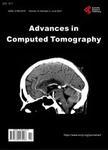Clinical Significance of Left Atrial Anatomic Abnormalities Identified by Cardiac Computed Tomography
Clinical Significance of Left Atrial Anatomic Abnormalities Identified by Cardiac Computed Tomography作者机构:Department of Medicine George Washington University School of Medicine and Health Sciences Washington DC USA Department of Radiology George Washington University School of Medicine and Health Sciences Washington DC USA Department of Epidemiology and Biostatistics George Washington University School of Public Health and Health Services Washington DC USA Division of Cardiovascular Medicine College of Medicine University of Florida Gainesville USA
出 版 物:《Advances in Computed Tomography》 (计算机断层扫描(英文))
年 卷 期:2015年第4卷第1期
页 面:1-8页
学科分类:1002[医学-临床医学] 100201[医学-内科学(含:心血管病、血液病、呼吸系病、消化系病、内分泌与代谢病、肾病、风湿病、传染病)] 10[医学]
主 题:Left Atrium Anatomic Abnormalities Accessory Appendage Diverticula Septal Pouch
摘 要:Purpose: The clinical significance of newly identified left atrial anatomic abnormalities (LAAA)— accessory appendages, diverticula, septal pouches—by multidetector CT (MDCT) remains unclear. Similar anatomical outpouchings, i.e., the left atrial appendage, have been associated with cardioembolisms and arrhythmia. To test the hypothesis that LAAA are also associated with increased risk of these events, we performed a retrospective analysis to examine the association of LAAA in patients undergoing CT with embolic events and arrhythmia. Methods: 242 patients (mean age 56 SD 12 years, 41% female) were selected who had CT coronary angiography performed with 64-row MDCT between 2007 and 2012 if complete clinical history records were available. CT images were independently reviewed for the presence of LAAA. Association of cerebrovascular accident (CVA) or transient ischemic attack (TIA), atrial fibrillation, and palpitations to LAAA was calculated using odds ratios (OR) with 95% confidence interval (CI) and Fisher’s exact test. Results: After adjusting for age, sex, hypertension, dyslipidemia and diabetes via multiple logistic regression, patients with accessory appendages are more likely to have reported palpitations (OR: 1.80;CI: 1.03 - 3.16). Patients with diverticula and septal pouches are significantly older than those without these abnormalities (p = 0.01 and p = 0.02, respectively). Septal pouches are associated with diabetes (OR: 2.29;95%CI: 1.15 - 4.54). Conclusions: Accessory left atrial appendages are associated with palpitations. Patients with septal pouches and diverticula are significantly older than those patients without these anatomic abnormalities, suggesting age dependency of these findings. None of these anatomic abnormalities were associated with thromboembolic events after adjustment for potentially confounding comorbidities.



